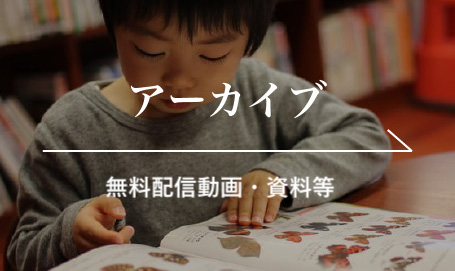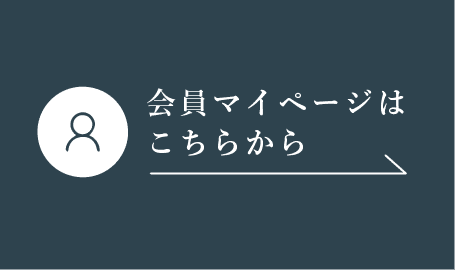< VOLUME 42, No.1 >
Shioji Akiko, Sasaki Akira, Tamura Takahiro, Sasaki Hiroko. Three Different Means to Express “First Person Singular” as Used by a Kindergarten Teacher to Help Create Good Relationships with Children.
Research on Early Childhood Care and Education in Japan, 2004, 42(1), 12-18.
This paper clarifies how a teacher can become one of the important factors of early childhood education. Using the method of qualitative analysis, we investigated a kindergarten teacher. The teacher responded to each child selectively by using three different names (“Boku”, “Watashi,” and “Ore”) to refer to himself, according to situations of the child and his relationship with the child. The observations revealed that he behaved in certain particular ways towards the children, continuously reflecting on the educational effects of his behavior during teaching. After the day was finished, he also reviewed the results of his practice and conferred about these results with other teachers. The results of this study demonstrate how the teacher examines and reflects on his educational practice of interacting with each individual child.
Keywords: qualitative analysis, relationship, practice
—————–
Hisatomi Yoko. A Study of Communication between a Teacher and a Child Who is a Non-Native Japanese Speaker.
Research on Early Childhood Care and Education in Japan, 2004, 42(1), 19-28.
Verbal communications between children from foreign countries and Japanese teachers is difficult in general. However, these children can often communicate sufficiently without understanding others’ languages. This case study analyzes how a three-year-old foreign child who could not understand Japanese was still able to communicate with a Japanese teacher. It also describes how the teacher helped him and how the child’s behavior was positively changed
Keywords: Child who is a non-native Japanese speaker, teacher, communication, kindergarten, case study
—————–
Itoh Keiko. A Preschool Teacher Who Guided a Child’s Interests from Letters to His Friends : The Role of a Preschool Teacher Working with Autistic Children as “the Human Environment”.
Research on Early Childhood Care and Education in Japan, 2004, 42(1), 29-41.
Longitudinal changes in the interaction between a boy with autism and other children at a kindergarten were recorded in a journal style through participatory observations of the daily teaching activities of a preschool teacher. Based on this record, the goal of this case study is intended to reveal the practical role of the preschool teacher in effecting changes in the child’s personal interaction with other children. The results indicated that the teacher’s approaches created particular play opportunities in which the child was encouraged to show his interests to other children and then to interact with them. Based on this observation, it was concluded that changes in the teacher’s interaction style with the child might affect the other children, as they have several different views of the child.
Keywords: autistic disorders, interaction, case study, role of preschool teacher
—————–
Tsukasaki Kyoko, MutoTakashi. The Impact of a Kindergarten Teacher’s Physical Contact with Children on Their Relationships With Each Other : Observation of a Class of Three-Year-Olds.
Research on Early Childhood Care and Education in Japan, 2004, 42(1), 42-50.
This study investigates the impact of a kindergarten teacher’s physical contact on kindergarten children in terms of their development of relationships with others. For one year we observed an experienced kindergarten teacher who vigorously adopts physical contact with her children as a means of caring for them. The kindergarten teacher receptively hugged children who were reluctant to associate with peers because of anxiety from their first entrance into the kindergarten environment. This receptive hug built up trustful relationships between the teacher and the anxious children, enabling them to regard the teacher as a safety base from which to associate actively with peers. It was found that children, through experience and observation, learned the teacher’s physical contact as models of a friendly message, and utilized them in the interaction with peers.
Keywords: physical contact, care for three-year-old children, Kindergarten teacher, relationship
—————–
Tachinami Sumiko. How Do We Teach that “Every Tree Has a Life?” : A Caregiver Who Studies the Inner World of Children.
Research on Early Childhood Care and Education in Japan, 2004, 42(1), 51-58.
This is a study about the relationship between a two four-year-old children and a caregiver who is part of their human environment. The two children’s play activities were observed during this research into childcare practice, focusing on a caregiver’s interpretation and interaction method of play. The children were trying to defeat a tree which they regarded as a monster. The caregiver found it very important to pay attention to the quality of children’s images and thoughts in their play. The children also tried to respond to their caregiver’s wishes. The result suggests that it is necessary for caregivers to delve into their charges’ formation of images and thoughts. It seems appropriate to regard such a caregiver as a good example of the ideal “human environment” for the development of children.
Keywords: inner world of children, pretend play, interaction
—————–
Udagawa Kumiko. An Examination of the Mind of Autistic Child and the Possibilities of Symbiosis in Integrated Early Childhood Education : Building a Bridge between the “Object World” and “Human World” in the Mind of an Autistic Child.
Research on Early Childhood Care and Education in Japan, 2004, 42(1), 59-70.
This study analyzes the author’s care of an autistic boy of 4-5 years old and examines the possibility of a symbiotic relationship in an integrated early childhood education. Apparently, the child lived in an “object world,” where he felt comfortable with physical changes of objects without relating them to humans. The author attempted to live in his “object world” by using herself as an instrument for occurrences of physical changes of objects. It was observed that the child regarded the author as an indispensable “tool” for obtaining physical changes in his “object world.” Thus he gradually learned to consider the intentions of others in activity contexts and gain a new ability which would serve as an important factor in the “human world” where people live best by cooperating together.
Keywords: autistic boy, integrated early childhood education, symbiosis, “object world”, “human world”
—————–
Yuzawa Miki, Torimitsu Mioko. A Description of The Learning Processes of Three-year-olds : A Project on Water at Kindergarten.
Research on Early Childhood Care and Education in Japan, 2004, 42(1), 71-80.
The purpose of this study is to describe the learning processes of three-year-olds who participated in a project on water at kindergarten. The project continued from October 16, 2002 to March 7, 2003. A teacher promoted children’s learning by creating meaningful contexts. Children tried to construct their understanding of characteristics of water by means of casual reasoning, relational reasoning, and analogy in the project. Children shared their surprise at new findings about water with other children. The findings indicate that 3-year-olds are able learners and that a project focusing on their cognitive learning is effective at early childhood education.
Keywords: 3-year-olds, project, learning, kindergarten
—————–









